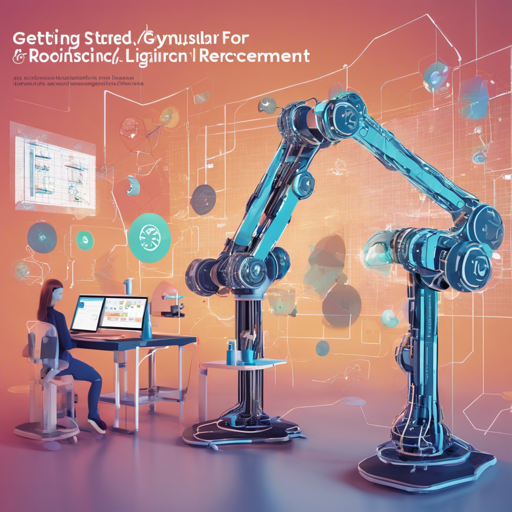If you’re diving into the world of robotics and reinforcement learning (RL), the Gymnasium-Robotics library is an essential toolkit. This library offers a variety of robotic environments tailored specifically for testing and improving your RL algorithms, all underpinned by the robust Gymnasium API.
Why Choose Gymnasium-Robotics?
Imagine you are a race car driver training in a simulator. The simulator provides different tracks, weather conditions, and car models, allowing you to experiment and improve without the risks of real-world racing. Similarly, Gymnasium-Robotics provides a safe environment for AI agents that need to learn how to interact with robotic systems, making it easier to test different algorithms without physical constraints.
Installation Steps
To start with Gymnasium-Robotics, follow these simple steps:
- Open your terminal.
- Run the following command to install Gymnasium-Robotics:
- Make sure you have the MuJoCo physics engine installed. Instructions for this can be found on the MuJoCo website and their GitHub repository.
- If you are using older versions of the environments requiring mujoco-py, use:
- Note that the library supports Python versions 3.8, 3.9, 3.10, and 3.11 on Linux and macOS. Windows setups are not officially supported but can be tested.
pip install gymnasium-roboticspip install gymnasium-robotics[mujoco-py]Exploring the Environments
Gymnasium-Robotics encompasses a myriad of environments, each with distinct tasks:
- Fetch: A robot arm with seven degrees of freedom designed to manipulate various objects.
- Shadow Dexterous Hand: An advanced robot hand environment featuring 24 degrees of freedom for intricate object manipulation tasks.
- MaMuJoCo: Focuses on multi-agent interactions within Gymnasium environments.
- Maze Environments: Navigate through intricately designed mazes using various agents.
- Adroit Arm: This includes tasks for the Shadow Dexterous Hand with extended freedom in arm movements.
- Franka Kitchen: A multitasking environment where a Franka robot interacts with common kitchen items.
Understanding the Multi-goal API
The Gymnasium-Robotics library offers a special Multi-goal API that augments standard interactions. Picture a soccer game where your objective is to not only score a goal but also follow a specific strategy that changes based on the opponent’s moves. Similarly, this API allows your agent to chase multiple goals within the same environment:
- Three observation types: observation representing the current state, desired_goal which is what the agent aims for, and achieved_goal that indicates the current achievements.
- To retrieve effective rewards and completion states, algorithms can leverage different goals for training sessions—a process which mimics situational awareness in strategic games.
Example Code to Get Started
Here’s a simple example showcasing the use of the FetchReach environment:
import gymnasium as gym
env = gym.make("FetchReach-v3")
env.reset()
obs, reward, terminated, truncated, info = env.step(env.action_space.sample())
# The following always has to hold:
assert reward == env.compute_reward(obs[achieved_goal], obs[desired_goal], info)
assert truncated == env.compute_truncated(obs[achieved_goal], obs[desired_goal], info)
assert terminated == env.compute_terminated(obs[achieved_goal], obs[desired_goal], info)
# However, goals can also be substituted:
substitute_goal = obs[achieved_goal].copy()
substitute_reward = env.compute_reward(obs[achieved_goal], substitute_goal, info)
substitute_terminated = env.compute_terminated(obs[achieved_goal], substitute_goal, info)
substitute_truncated = env.compute_truncated(obs[achieved_goal], substitute_goal, info)In this code, we reset the environment, take a random step, and validate the rewards based on our goals.
Troubleshooting
If you encounter issues during installation or usage, here are some troubleshooting tips:
- Ensure that you are using a supported version of Python (3.8 to 3.11).
- Double-check that the MuJoCo engine is correctly installed and your licenses are set up properly.
- If you face issues specific to certain environments or goals, referring to the documentation at robotics.farama.org can be invaluable.
For more insights, updates, or to collaborate on AI development projects, stay connected with fxis.ai.
Conclusion
At fxis.ai, we believe that such advancements are crucial for the future of AI, as they enable more comprehensive and effective solutions. Our team is continually exploring new methodologies to push the envelope in artificial intelligence, ensuring that our clients benefit from the latest technological innovations.

